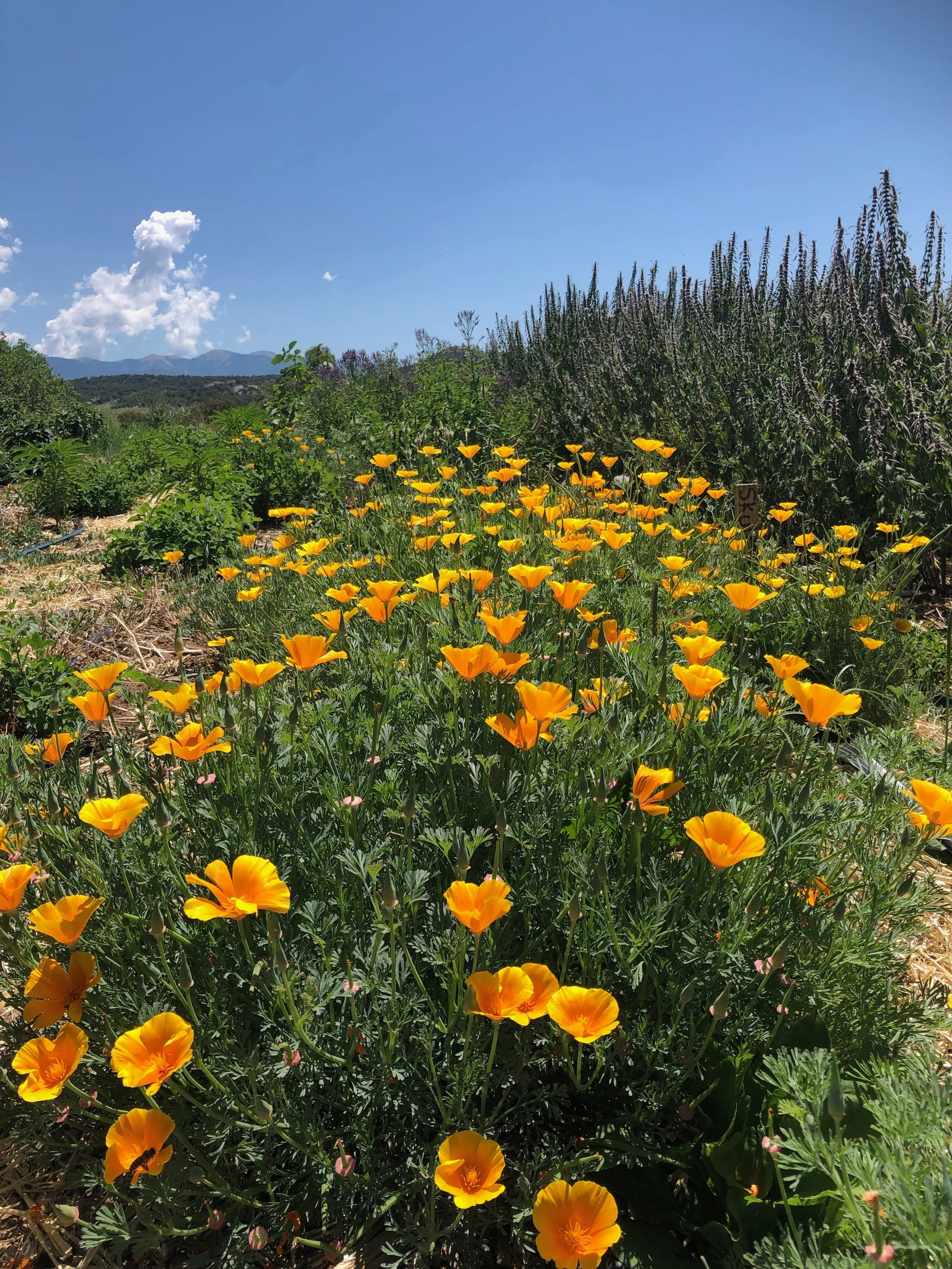Turning to herbs for pain relief
Typically when someone is in pain the first thing they reach for is a bottle of NSAIDS, or opiate based pain medication. While these pills do help take away pain they do so with significant side effects. These medications certainly have a time and place and I am grateful they exist for those times when we really need acute relief. It is also true that expanding our pain management toolbox to include plants would benefit our healing process in many ways. We have a broad range of actions in our western materia medica that we can turn to for pain relief. This is important because these plants don’t have negative side effects that NSAIDS and Opiate based pain medication do.
Without going into too many details NSAIDS turn off our bodies inflammatory process entirely which is not always a good thing. It turns out that inflammation is an intelligent response of the body to help heal a inflicted area. Furthermore, NSAIDS break down the lining of the gut and in severe cases cause stomach ulceration. Next, we have an epidemic of people using opiate based pain medications recreationally which is wreaking havoc on their physical, mental, emotional and spiritual well-being.
So where do we turn to when we are in pain? Anodynes is a term for a medicinal agent that is taken for treating pain. Unfortunately, just because an herb is an anodyne doesn’t necessarily mean that it will work for all types of pain. In fact it could exacerbate it. So we need to get more specific here and understand what herbal actions treat different types of pain.
The question we must ask is why is a person in pain? Is it because there is muscle spasming, fluid accumulation, too much inflammation etc.
You see I can’t just say when you have pain then take this herb and you will feel better. Finding the herbs that will help requires assessing what is causing the pain and what mechanisms of action can support those particular causes.
Lets take a look and some herbal actions and how they can relieve different types of pain.
Hypnotic Nervines
These plants have a sedative action on the nervous system. This sedation can provide relaxation to the body, and mind which can relieve pain. These plants are best taken at night because they can make us drowsy during the day.
Some of my favorite hypnotic nervines specific for supporting pain include: Hops, California Poppy, Valerian, and Wild Lettuce. There are many more but these are ones that grow well here in Southwest CO.
Anti-spasmotics
Anti-spasmotics also known as spasmolytics will relax tension, spasm, and cramping in either or both the smooth muscles and skeletal muscles. So these are great remedies to reach for when pain is a result of cramping, spasm, or tension. Many hypnotic nervines are also anti-spasmodic but not all. There are many anti-spasmodics that do not have a sedative effect making these great to work with during the day. Plants that I grow and work with include Black-Cohosh, Crampbark, Lobelia, and Pulsatilla.
Inflammation Modulation
Yes, too much inflammation can cause pain and is not helpful. But a certain degree of inflammation is crucial for the healing process. Thus inflammation modulating herbs are really helpful here. These plants will support the inflammatory process so that the inflammation can support our bodies in healing while making sure there is not too much inflammation. I love to work with Licorice, Yarrow, Chamomile, Calendula, Willow, and Turmeric to modulate inflammation.
Diuretics
Often when there is an injury, fluid accumulates in the area and leads to pain from too much pressure and from fluid pressing down on nerves. Diuretics will help our body to drain the fluid from the tissues. So these plants are indicated when there is puffy joints, swelling, edema etc. I like to work with Gravelroot, Nettle, Celery Seed, & Dandelion in this situation.
Circulatory Stimulants
Circulatory stimulants will drive blood flow to areas that have a lack of blood supply. Whenever we see a lack of blood flow we see a lack of oxygenation and a build up of waste products. Some plants that will help to circulate blood include Cayenne, Ginger, Poplar buds, Prickly Ash, Rosemary, & Turmeric.
Rubefacients
Rubefacients are applied topically, they help to bring blood flow to the afflicted area. Rubefacients dilate the capillary best in a local area which allows fresh oxygenated, nutrient rich blood flow to the area. They can often make an area hurt a little bit initially but they really decrease pain in the long run. Some rubefacients include: Cayenne, Ginger, Peppermint, & Poplar buds.
Incorporating plants into pain management protocols will increase healing and well-being without negative side effects. It is important to consider many other aspects such as diet, lifestyle management etc. as we address pain. It is through the synergy of plant medicine, diet, and lifestyle management we can get to the deeper causes of pain and provide much deeper levels of relief.

